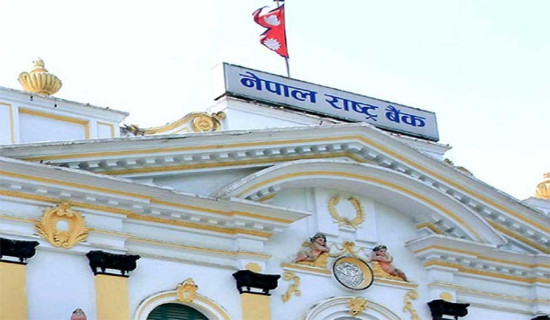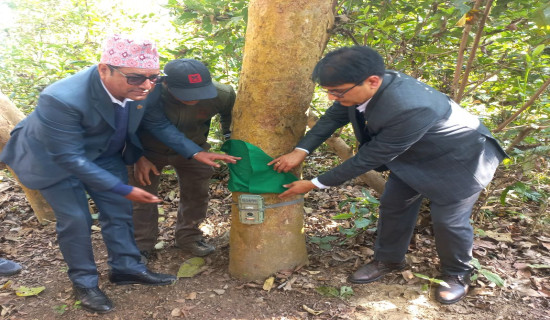- Tuesday, 16 December 2025
Lure Of Xizang As Peace Destination
While I was reviewing the two recently published books on Nepal and China relations by one of the seasoned journalists, I received an invitation to attend the tourism conference and experience the winter season in Tibet, officially known as Xizang. I readily accepted the invitation. I also witnessed the principle of equality and mutual benefit in action, particularly through the provision of a free visa to China for Nepali citizens, aimed at fostering friendship and enhancing personal exchanges starting from May 1 of this year.
With the promise of encountering the playful and captivating Panda during my next visit to Chengdu, I boarded a flight to Gonggar airport. Last month, this well-equipped airport also received the C919—China's indigenously developed airplane—for its high-altitude flight operational check, which turned out to be successful.
We were escorted to Lhasa through the expressway with tunnels. In fact, China has achieved tremendous success in the construction of tunnels with the innovation of 700-meter boring capacity per week. Our accommodation was arranged just in between two major points of attractions, namely the Potala Palace in the East and Norbulingka in the West.
Lhasa
Prior to our attendance at the conference, we explored the Potala Palace, a magnificent structure with thirteen stories, distinguished by its red and white and was constructed based on the insights of our sister Bhrikuti, under the guidance of her esteemed husband, Songtsen Gampo. The robust primary structure, featuring a gleaming gilded roof, was built by several descendants of Nepali and Tibetan architects. I was intrigued to learn that the white walls are repainted annually using milk. We also visited the historic Shol Town and enjoyed the breathtaking views of Zongjiao Lukang Park from the palace and also paid our respects to the monument commemorating the Peaceful Liberation of Xizang.
After driving approximately three kilometers west from the Potala Palace, we arrived at Norbulingka Palace, which served religious and local government affairs from the 17th century until the mid-20th century, particularly during the summer months. The palace, surrounded by a garden with a pond, hosts an annual yogurt festival and reflects a blend of Han, Western, and Tibetan cultural influences.
The library, murals, statues, roofs, and the burial sites of the Dalai Lamas in both the Potala Palace and Norbulingka, along with the majestic Yumbulagang—an emblem of Xizang’s civilization—have all been meticulously preserved, showcasing their historical and cultural importance.
Cultural industries
We visited several cultural industries that manufacture medicinal incense, Bang Dian/Bakhu, and carpets. The high-quality sheep wool and wood-made traditional machines are used to weave Bang Dian and traditional and modern carpets. Bang Dian is a dazzling woolen-fabric apron that married local women wear beneath their waist. The products from Xizang are well appreciated at home and abroad.
The traditional products of Xizang are also exhibited in the fashion event and trademark festival annually in major cities of China to stimulate the sales. The entrepreneurs are encouraged to join the cooperatives with shares and sell the products via e-commerce platforms by the local government.
We acknowledged that the local government has been supporting the skilled artisans to create stylish and attractive products in order to boost the local economy and preserve intangible cultural heritage.
We attended a 600-year-old Tibetan opera performance at the Yalong Theatre in Shannan City. The opera’s history is intertwined with fundraising efforts for the construction of the Iron Bridge, aimed at benefiting the community. It was remarkable to witness young performers who are surpassing the legacy of their predecessors. The renovated theatre boasts state-of-the-art technology, featuring advanced sound and lighting systems.
The people in Xizang and Nepal have centuries-old cooperation for the aforementioned products. However, at present, Xizang has stepped towards modernization, increasing the source of raw materials and human resources required for cultural industries such as art performers, sheep, etc. It has directly contributed to revenue generation. The local governments and cultural and tourism entrepreneurs in Nepal should also closely cooperate for the modernization and revenue generation.
In the fairy region of Xizang, there are three holistic lakes. Among them is the Yamdrok “jade” Lake on the way to Xigaze. It is 478 meters below Tilicho Lake in Manang. The interesting feature beside this vibrant blue lake is to meet and greet gentle Zang’Ao, mastiff dogs who were once Gods of War in heaven.
Leaving the limpid Yamdrok Lake behind, we drove to observe the Karola Glacier. As we were approaching, the glacier resembled a white silk sheet spread over the rock for Thangka painting. Nearly half of the glaciers of China are situated in the Xizang region that are given special attention for protection by enacting laws last year. The government of Nepal also should focus on protecting glaciers, which are shrinking due to climate change.
Monasteries
I was particularly intrigued to observe three popular monasteries, namely Shakya (1073 AD), Samye (8th Century), and Tashilhunpo (1447 AD), for the Sakyapa, Ningma, and Gelug sects, respectively. Overall, the region consists of more than 46,000 educated monks in 1,700 well-preserved monasteries. Daily ritual praying, such as Monlam and occasional Cham dance, are organized wishing for good harvest and world peace, fading evil spirits.
We noted piles of scriptures in the Lhakang Chenmo Hall at Shakya Monastery, which serve as a focal point for scholarly debates among the monks.
The central and provincial governments have been investing more than 50 million Yuan annually to reconstruct splendid monasteries that include halls, golden roofs, green surroundings, proper sanitation, medical treatment of monks, etc. Nowadays, monks can focus on their studies with improved conditions. It is the significant emphasis on the preservation of culture and honor for Buddha. The lotus-shaped terminal of Gonggar airport is also transmitting the message for global peace.
The conference highlighted several points of attraction in Xizang. It could be the best, most affordable, and most resourceful destination for major religions, naturalists, and cultural entrepreneurs of Nepal.
(The author is a managing director of Learn Travel and Tours.)
















